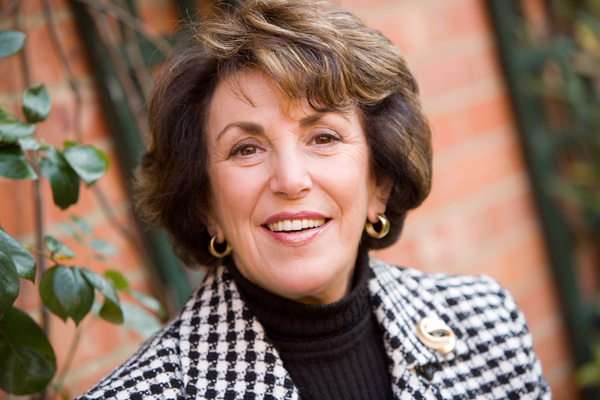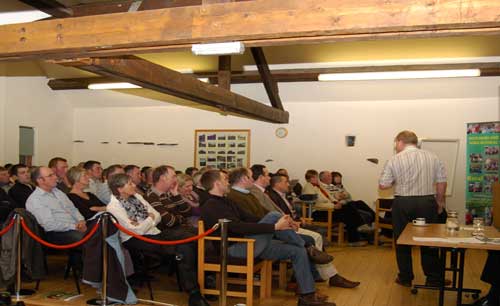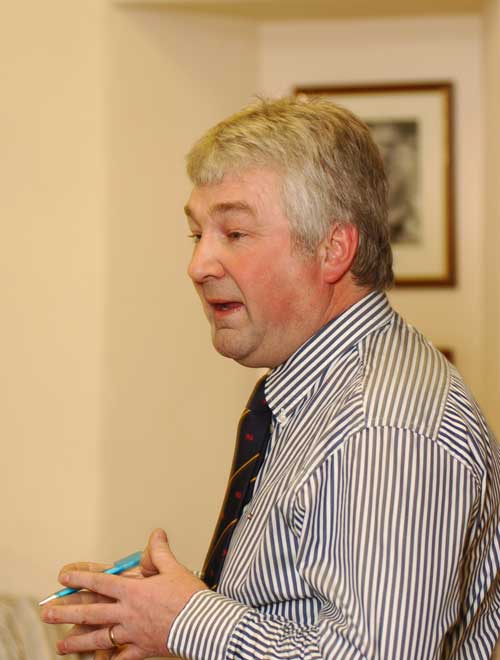
Egg producers are facing a bigger crisis than the one caused by Edwina Currie in the 1980s. That was the view expressed by Steve Carlyle of Country Fresh Pullets when he addressed free range egg producers at a meeting at the premises of the Westmorland County Agricultural Society.
Mrs Currie caused huge damage to the egg industry when as a government Health Minister in 1988 she said that most of Britain’s egg production was infected with the salmonella bacteria. It took years of hard work by British Lion to restore the reputation of the industry, but Steve Carlyle believes the difficulties facing producers now are more serious. "These are difficult times. We are in the poop. The industry has never had it so bad. I believe it is worse than Edwina," he said during the meeting at Crooklands near Milnthorpe. "We really are in difficulties. We have got very high feed prices combined with oversupply of egg production."
About 80 producers attended the meeting, which was organised by BFREPA and attended by the association’s chairman, John Retson, as well as John Geldard, regional representative and one of the original members of BFREPA. Many of the producers expressed concern about the current state of the market. Huge increases in feed prices have come at a time when producer prices have been cut because there are too many eggs on the market. BFREPA costings show that free range producers are currently losing more than £5 per bird. Some of those at the meeting complained that this was despite the fact that the price of eggs had been increasing in the supermarkets.
Steve Carlyle said that the main reason producers were suffering was the huge increase in production in recent years. New entrants had been attracted into the industry because of the previous good returns producers had been enjoying, he said, conventional cages were currently running alongside enriched colonies until the EU ban came into force at the end of this year and the increase in permitted external stocking density had enabled producers to double the number of hens they kept on their land. In retrospect that increase in stocking density may not have been a good idea, he said. With a UK laying flock of 31 million birds everyone had been happy. The flock was now up to 36 million and it was far too many. "These figures last a year. There is no quick fix."

John Retson said that on top of the commercial laying flock there were two million backyard hens affecting the market. John has already warned members that the current market problems could continue for some time. At a recent meeting with the packers’ organisation, NEMAL, he was told that the oversupply could last until the middle of 2012. To make matters worse the latest statistics from Defra show that after falling towards the end of 2010 chick placings jumped up again in January this year. A total of 3.45 million chicks were placed in January compared with 2.8 million in December. The moving total increased to 35.05 million.
Steve Carlyle said that whilst producer prices had been falling feed prices had been increasing, driven largely by big rises in the price of wheat, which accounted for 50 per cent of the diet. This was partly due to huge demand from developing countries like China and India, partly the result of speculators looking to make a profit and partly because of biofuel production. "We are currently paying over £200 a tonne. Even new harvest we are looking at £160 to £166 a tonne. Don’t expect a dramatic drop in feed price coming. We are unsure what is going to happen but it is the combination of low egg price and high feed price that is hurting at the moment."
One issue that did need to be resolved, he said, was the insistence from supermarkets that the industry use only non-GM feed. With the rest of the world moving to GM, the cost of non-GM soya was now £30 to £70 a tonne more than GM soya. That was the equivalent of two pence on a dozen eggs. The supermarkets had to remove this requirement, he said.

Steve also took a swipe at the supermarkets for the oversupply of eggs in the market. Packers had been encouraged to take on producers to compete for supermarket contracts and had then found themselves competing with rival packers on price to win those contracts. "The supermarkets have sucked us into an oversupply position and are reaping the benefits of it in my opinion."
He said that genetic improvement had increased the productivity of layers in recent years. A bird producing 239 eggs in 1970 was now producing 312 – an increase of 73, or 30 per cent over a relatively short period of time. More recently the dioxin scare in Germany had had a detrimental effect on the UK market. Egg sales had dropped in Germany, resulting in German eggs looking for markets elsewhere, including the UK.
One of the issues raised during the meeting was the forthcoming ban on conventional cages in the European Union. Whilst the UK has prepared for the change, some 30 per cent of the EU flock may well be ’illegal’ when the ban come into force on January 1 next year and there are concerns that if those hens continue to produce after the deadline their eggs could find their way into the UK and unfairly undercut British producers.
John Retson told those at the meeting that the industry had gained the support of politicians in resisting attempts to have the introduction of the ban delayed, but if ’illegal’ eggs did continue to be produced after the ban the UK was seeking a ban on those eggs coming to the UK and the introduction of a separate code to clearly label the eggs.
John said it was vital that in the first quarter of next year the UK Government was active in checking imports for ’illegal’ egg. Containers arriving in the country needed to be opened to send out a clear message that the authorities were serious about preventing such egg coming to the UK.
He conceded that the more difficult area to police was liquid egg and egg products. The way forward in this respect was to encourage the use of British Lion as the safe and legal source of egg product.
